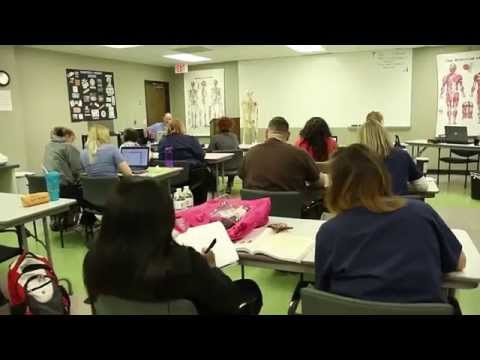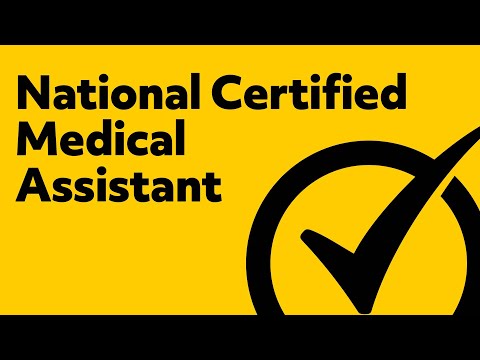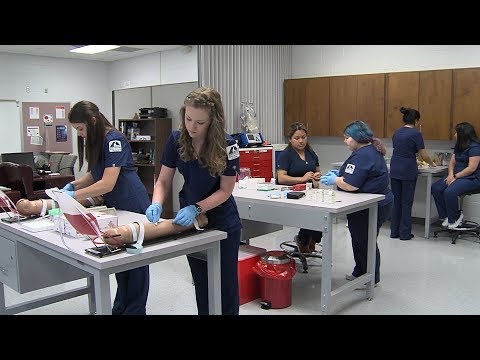What Does a Medical Assistant Do?
Contents [show]
A medical assistant is a multi-skilled professional who supports the work of physicians and other health professionals.
Checkout this video:
Job Description
A medical assistant is a multi-skilled professional who supports the work of physicians and other health professionals, usually in an outpatient setting. Medical assistants perform many administrative and clinical tasks to keep the offices of physicians and other health practitioners running smoothly. duties of medical assistants vary from office to office, depending on the size and location of the practice, as well as the specialty. In small practices, medical assistants might handle all administrative and clinical duties, while in larger practices they might specialize in either administrative or clinical duties. Some common administrative duties include scheduling appointments, maintaining medical records billing and coding for insurance purposes, and handling correspondence.
Common clinical duties include taking and recording patient histories and vital signs, preparing patients for examination, explaining treatment procedures to patients, assisting with office procedures such as administering injections or removing stitches, drawing blood, ordering laboratory tests and x rays, handling correspondence, and performing basic bookkeeping tasks. In some states, medical assistants may also be allowed to give medications under the supervision of a physician or licensed nurse.
Duties and Responsibilities
Medical assistants perform routine administrative and clinical tasks to keep the offices of physicians and other health practitioners running smoothly. The duties of medical assistants vary from office to office, depending on the size and type of practice. In small practices, medical assistants often handle both administrative and clinical duties and report directly to an office manager, physician, or other health practitioner. In larger practices, medical assistants usually are assigned specific duties.
Common administrative duties include answering telephones, greeting patients, updating and filing patients’ Medical records scheduling appointments, handling correspondence, billing and coding information for insurance purposes, and handling patient follow-up.
Clinical duties may include taking patient histories and recording vital signs; preparing patients for examination; interviewing patients about symptoms; drawing blood; performing basic laboratory tests; removing sutures (stitches); assisting with procedures such as setting up trays of instruments for surgical procedures; applying sterile dressings to wounds; preparing patients for X-rays; operating X-ray equipment; transcribing physicians’ orders from charts or electronically fed voice systems into patients’ permanent medical records performing electrocardiograms (EKGs); instructing patients regarding medication dosage or special diets after the physician sees them.
Skills and Qualifications
Skills and Qualifications
Medical assistants must have excellent customer service skills to fielding patients’ questions, scheduling appointments, and handling billing and insurance paperwork. They must be able to work independently and as part of a team.
Most medical assistants have postsecondary education such as a certificate or diploma from an accredited medical assisting program, although some states allow on-the-job training instead. Programs typically last 1 year or less and lead to a certificate or diploma. Some community colleges offer 2-year associate degree programs in medical assisting.
A few medical assistants become certified. Although certification is not required, it may give job seekers a competitive advantage, demonstrate professional competence, and provide a sense of personal accomplishment. Three credentialing organizations certify medical assistants: the American Association of Medical Assistants (AAMA), the National Healthcare Association (NHA), and the American Medical Technologists (AMT). Each organization has different eligibility requirements to take its certification exam.
Registered medical assistants have completed an accredited program and passed an examination administered by one of the credentialing organizations. A small number of states require medical assistants to be licensed or registered; requirements vary by state.
#To become certified, medical assistants must have graduated from an accredited program and pass an examination
Education and Training
Medical assistants can be trained on the job or through formal education programs. Many community colleges, technical schools, and vocational schools offer medical assistant programs. The length of the program can range from a few months to 2 years, and most programs award a certificate or diploma. Some states have certification requirements for medical assistants. To learn more about certification, see the National Healthcare Association’s Certified Medical Assistant (CMA) credential.
Certification
There are many types of medical assistant certification programs available. Some are designed for those who have completed a training program, while others are designed for those who have on-the-job training.
The Board of Certification (BOC) offers the Certified Medical Assistant (CMA) credential. To be eligible for the CMA credential, candidates must have completed an accredited medical assistant program and passed a certification exam. The BOC also offers the Registered Medical Assistant (RMA) credential. To be eligible for the RMA credential, candidates must have completed on-the-job training and passed a certification exam.
There are also several state-specific medical assistant certifications available. These programs generally require candidates to have completed a training program or on-the-job training and to have passed a state-specific examination.
Medical assistants who have not yet completed a certification program can still participate in many professional organizations. These organizations provide resources, information, and networking opportunities for medical assistants.
Salary and Job Outlook
Medical assistants are unlicensed practitioners who perform various support services in medical offices and clinics, under the supervision of a licensed physician or other health care provider. Although their job duties vary, depending on state law and the specific medical office or clinic in which they work, they generally perform administrative and clinical tasks.
Medical assistants typically have completed a postsecondary education program of more than 1,000 hours; however, some states allow individuals to be trained on the job. Medical assistants must stay up-to-date with Medical Terminology office procedures, and insurance regulations. They should also be aware of confidentiality issues and HIPAA regulations.
Working Conditions
Medical assistants work in all types of healthcare facilities, from small doctor’s offices to large hospitals. They typically work regular office hours, though some may be required to work evenings or weekends. Many medical assistants have flexible job schedules that allow them to work part-time or full-time.
Career Paths
Medical assistants are in high demand and there are many different career paths that they can choose to follow. Here are just a few of the options available to medical assistants:
-Clinical medical assistant: A clinical medical assistant works directly with patients, providing care and assistance.
-Administrative medical assistant: An administrative medical assistant manages the office, handles billing and insurance, and performs other clerical duties.
-Specialty medical assistant: A specialty medical assistant works in a specific area of medicine, such as optometry, podiatry, or cardiology.
Medical assistants can also choose to become certified in a particular area of medicine, such as phlebotomy or EKG. This can lead to higher pay and more responsibility.
Medical Assistant Job Opportunities
There are many job opportunities available for medical assistants. They can work in a variety of settings, including hospitals, clinics, and doctor’s offices. Their duties vary depending on the employer, but they typically include taking medical histories and vital signs, scheduling appointments, preparing patients for examinations, and assisting the physician with procedures.
Medical assistants must be detail oriented and able to multitask. They must have excellent customer service skills, as they often deal with patients who are in pain or under stress. They must be able to work well under pressure and handle confidential information with discretion.
Medical Assistant Job Resources
Medical assistants are in demand now more than ever as the medical industry continues to grow. But what does a medical assistant really do? Let’s take a look at what medical assistants do on a day-to-day basis, as well as their job duties, responsibilities, and requirements.
Medical assistants are multi-skilled health professionals who perform both administrative and clinical duties to support the work of physicians and other health care providers. They may work in hospitals, clinics, physician’s offices, or other health care facilities.
The duties of a medical assistant vary depending on the size and type of facility in which they work, as well as the specific needs of the physician or other health care provider they support. However, there are some common duties that all medical assistants perform. These include:
• Answering phones and greeting patients
• Scheduling appointments
• collecting and recording patient vital signs
• Preparing patients for examination
• assisting with examination and treatment procedures
• performing routine laboratory tests
• administering medications and injections
• instructing patients on self-care procedures
• handling correspondence
• maintaining medical supplies







